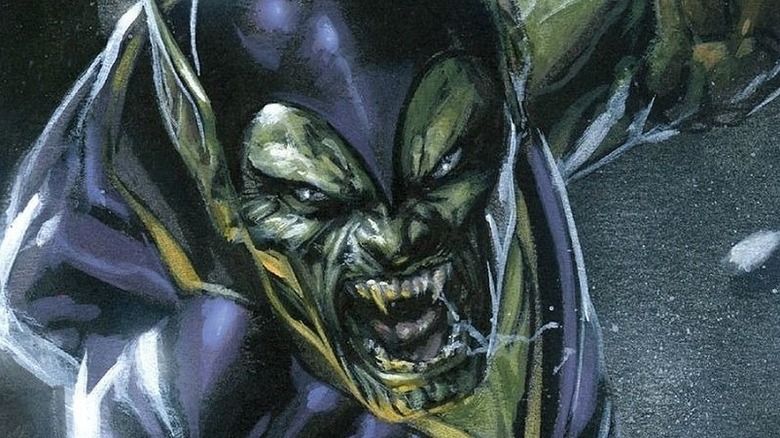
The Marvel Cinematic Universe is celebrated by fans around the world for its textured, flawed, and riotously entertaining heroes. But what are heroes if not adversaries to the world's greatest threats? The MCU has played host to many bad guys, and although most of them aren't cherished among fans, exceptional heavy-hitters like Thanos and Loki have become stars of a magnitude that no one at the House of Ideas was probably expecting. With the "Infinity Saga" closed and the biggest baddies out of the picture, there's plenty of room for fresh blood.
The following 11 supervillains are not the most well-known in the Marvel Comics universe, but their histories, powers, and personalities all have serious big-screen potential. Each one could captivate global audiences, if only they had the opportunity. Coming from all corners of the Marver roster, these 11 lesser-known Marvel villains deserve the chance to leap from the panel to the screen. They may not be inevitable, but they sure are cool.
Shuma-Gorath
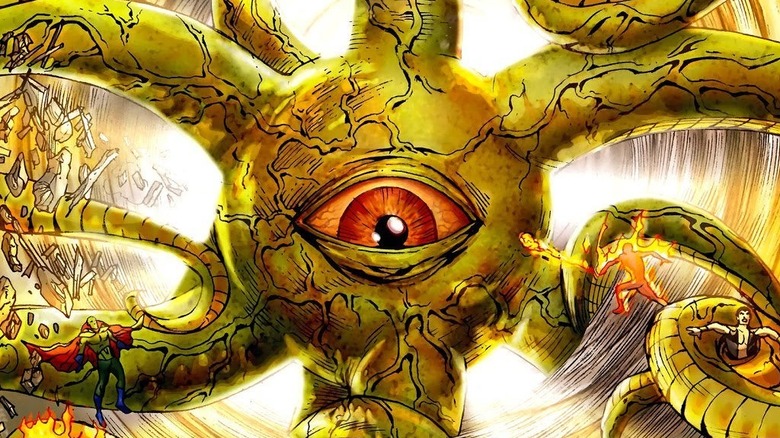
As the pilot episode of "What If...?" reached its climax, hardcore Marvel fans saw super-soldier Peggy Carter deliver beatdowns to dozens of HYDRA agents across Europe. During an infiltration of HYDRA's headquarters in pursuit of the Tesseract, Captain Carter and her Howling Commandos watched helplessly as the Red Skull used the Tesseract's cosmic energy to summon an enormous tentacled monster. To most audience members, the creature was a generic cosmic threat. To the few in the know, this was actually the surprise debut of cult-favorite Marvel monster Shuma-Gorath, the All-Killer of the Dawn.
Taking cues from the eldritch horrors of author H.P. Lovecraft (even though his origin is actually tied to "Conan the Barbarian" creator Robert E. Howard), Shuma-Gorath is one of the most powerful entities to ever threaten the Marvel multiverse. Essentially a god, he's the ruler of a hundred universes, with mystic powers that can't be countered by most of Marvel's heroes. Though he's dwelled in the comics for decades, Shuma's most commonly recognized for his playable appearances in the fan-favorite fighting video game series "Marvel vs. Capcom" -- he's been included in more installments of the franchise than most of the core Avengers.
Unfortunately, the monster in "What If..." eventually revealed a Piranha Plant-esque centerpiece that resembled a Sarlac from "Star Wars" more than it resembled Shuma. Even so, this almost-cameo proves Marvel Studios has its singular enormous eye on the Lord of Chaos -- maybe Doctor Strange's upcoming stay in the "Multiverse of Madness" will include a confrontation with this omnipotent terror.
The Beyonder
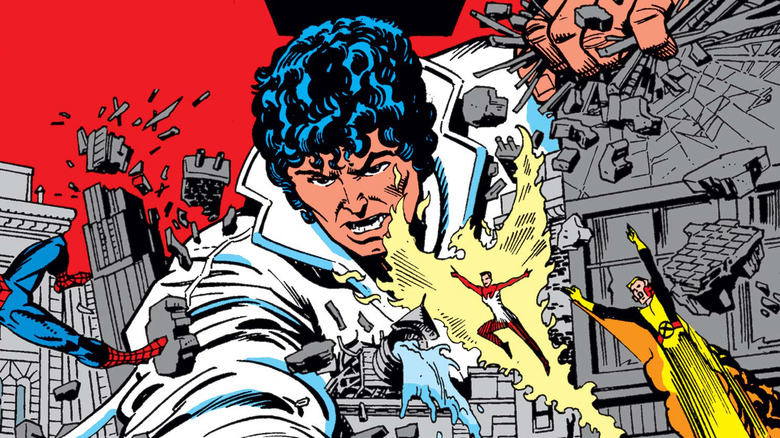
Fans are very excite to know the identity of the MCU's next multi-Phase threat. As soon as "The Avengers" revealed Thanos as the man -- or alien -- behind the Battle of New York, fans knew exactly where the next few years of Marvel Studios productions were headed (even if they didn't know just how far off the confrontation with the Mad Titan would be). For the first time since 2012, the MCU's endgame is a complete mystery. The season finale of "Loki" may have introduced one of the primary adversaries of Marvel's second Saga, but is it truly so cut-and-dry? After all, if the next 30 films and shows are to be centered on an emerging multiverse, shouldn't its greatest enemy have a history of threatening the multiverse's destruction?
Enter the Beyonder, the malevolent ruler of a distant multiverse who gained passage into Marvel's world and transported its top heroes and villains to an artificial planet called Battleworld, where he made them fight gladiator-style. A cosmic Donald Rumsfeld, the Beyonder is the architect of the "Secret Wars" that served as the central conflict of 1984's 12-issue miniseries of the same name. Initially just an observer, the Beyonder joined the fray in "Secret Wars II," assuming a stylish corporeal form and bringing the Marvel multiverse to its knees with his unbridled omnipotence. The Beyonder is an absurdly powerful god who is one step beyond Thanos in terms of both ability and ambition -- Thanos wanted to kill half the universe in an act of mercy, while the Beyonder wants to murder the multiverse entirely.
Lady Hellbender
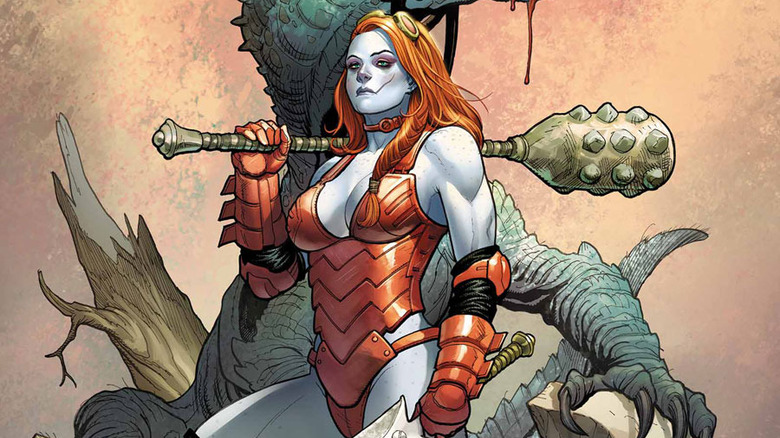
If the "Guardians of the Galaxy" films prove anything, it's that the stars are packed with just as many colorful characters as Earth. Proving the point even further is a fairly recent addition to the Marvel universe, Marguerite Hellbender. Debuting in 2015 as the initial intergalactic adversary for Amadeus Cho, aka the Totally Awesome Hulk, Lady Hellbender is the headstrong warrior-queen of planet Seknarf Nine, home to a sanctuary for some of the rarest monsters in the Milky Way. Her ongoing quest to add more dangerous creatures to her collection brought her to Earth, where she attempted to capture Marvel monster mainstay Fin Fang Foom.
Given that she's not even a decade old, Lady Hellbender hasn't made much of an impression, but her iconic look and blunt weapons set her apart from other female MCU villains. Additionally, her appearance as a supporting character in the upcoming "Guardians of the Galaxy" video game proves that she has multimedia potential. Though Lady Hellbender would obviously fit in the third "Guardians" film, all it would take to summon her to Earth is a strong enough monster. With the "She-Hulk" Disney Plus series set to expand the Hulk family and "Shang-Chi" bringing back the Abomination, Lady Hellbender's arrival may not be too far away.
Super-Skrull
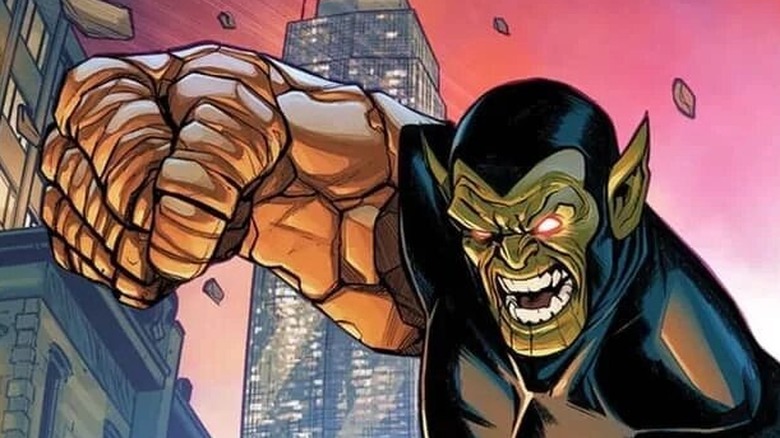
One of Marvel Studios' defining strengths is its moderation in adaptation -- staying true to the source material has its perks, but knowing when to change things up is every bit as beneficial. One of the more fascinating examples of this middle-ground is the Skrulls, the shapeshifting aliens first introduced in "Captain Marvel." Arguably the film's biggest twist, the Skrulls were not the race of savages Carol Danvers (and the audience) had been led to believe. Instead, the Skrulls were peaceful and passive refugees searching for a new home.
Any hardcore Marvel fan will point out the MCU's sympathetic portrayal of the Skrulls is vastly different from the dangerous, bloodthirsty aliens they are in the comics. Arguably the nastiest of them all is Kl'rt, who was infused with the collective powers of the Fantastic Four and christened the "Super-Skrull," representing the full might of the intergalactic warriors.
As if imitating one hero isn't bad enough, Kl'rt has full access to an entire family's abilities, not to mention military training, tactical know-how, and mind-control powers. Super-Skrull has never been the most popular villain (his most prominent appearance was in the third "Marvel vs. Capcom" game), and his direct ties to Marvel's First Family limit him in a cinematic universe in which the Fantastic Four doesn't exist -- not yet, anyway. The more complicated issue lies the way in that Kl'rt's warrior-race has been re-contextualized. If Marvel Studios ever decides to give the Skrulls a heel-turn, Kl'rt would be the perfect ambassador.
Moonstone
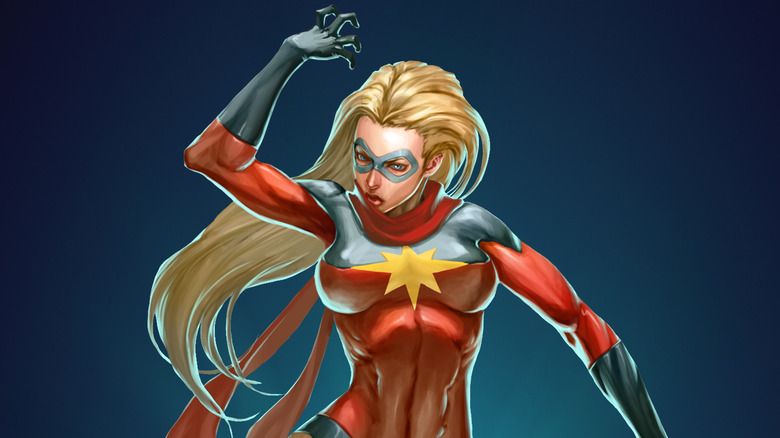
Though it feels like a fool's errand to name a popular character after the company that created them, the most successful superhero film studio in the world has not one, but two characters who fit that description: Captain Marvel, who debuted in 2019, and Ms. Marvel, whose introduction is set to stream on Disney+ in late 2021 or early 2022. Carol Danvers and Kamala Khan will cross paths in 2022's "The Marvels," likely bringing this naming conflict to the forefront. Therefore, it makes sense for a villain who's also held the "Marvel'' moniker to square off against the pair -- and, as it happens, there's an especially evil supervillain who once stole the "Ms. Marvel" title for herself: Dr. Karla Sofen, also known as Moonstone.
Named after the Kree device that gave Sofen her powers, Moonstone is a twisted and manipulative psychopath who has spent the majority of her time on different supervillain teams, including the Thunderbolts and the Masters of Evil. In 2009, she joined the Dark Avengers and briefly masqueraded as Captain Marvel -- in fact, the two have similar origins, having both received their powers from a Kree colleague. Carol is one of the newest heroes in the MCU, and Kamala Khan named herself after her favorite superhero; it would thematic make sense if the antagonist of "The Marvels" would do the same thing, corrupting the title to fit her own insidious sense of justice.
Scourge Of The Underworld
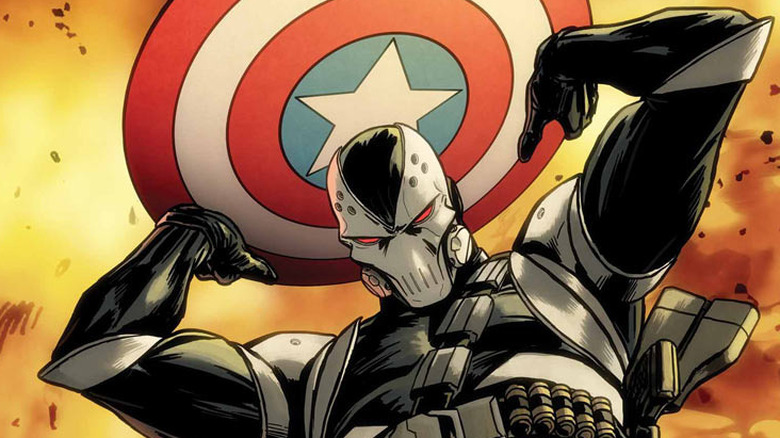
One of the most fascinating parts of the MCU's take on superheroes is that it functions almost entirely without secret identities. Long ago, in a time before the MCU, the secret identity was integral to the mythology of almost every single superhero. But then Tony Stark told the world he was Iron Man. Ever since, heroes' struggles to keep their civilian alter-egos hidden have become relics (Spider-Man notwithstanding). But, as "The Falcon and the Winter Soldier" proved, supervillains with secret identities are still a viable and interesting premise; one of the best Marvel supervillains who has something to hide is called the Scourge of the Underworld.
The Scourge is not to be underestimated. With an identity that's been kept secret for decades, this mysterious mobster was initially created by Marvel writer Mark Gruenwald as a plot device to trim down Marvel's rogues gallery, silencing any villain too small or redundant to keep around. Z-listers like Megatak, Enforcer, and Titania all fell to the Scourge, but the menace made their mark in issue #319 of "Captain America," in which the Scourge murdered seventeen supervillains at The Bar with No Name. With a secret identity that's never been divulged and enough firepower to wipe out all criminals still hanging around the MCU, the Scourge would make for a fantastic villain at the center of an event series on Disney+.
Diamondback
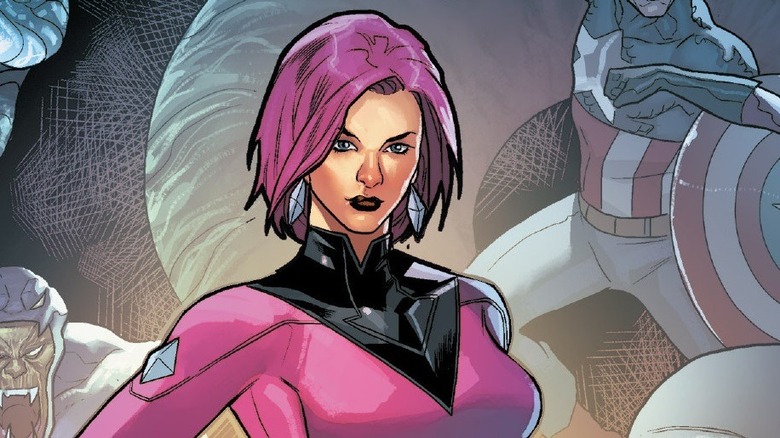
Pour one out for the Serpent Society, the only Marvel entity to ever be publicly punk'd by Kevin Feige and company. The small-time group of snake-eyed Captain America villains was initially announced as the centerpiece of Steve Rogers' third solo outing during Marvel's big "Phase Three" presentation in October 2014, only for Feige to walk back the claim (and accompanying logo) less than an hour later and reveal "Civil War" as the film's actual subtitle. "Captain America: Civil War" remains one of the most celebrated and pivotal films in the MCU, but the Serpents are still on standby, especially Rachel Leighton, also known as Diamondback.
Not to be confused with Willis Stryker, the Diamondback seen in Netflix's "Luke Cage" series, Rachel's a classic enemy-turned-friend in the Marvel mold, beginning her career as a prominent Serpent Society member who switched sides after catching feelings for ol' Stars 'n Stripes. In the years following her fling with Cap, Rachel worked as an agent of S.H.I.E.L.D. and founded her own super-team of Serpent Society deserters, BAD Girls, Inc. Diamondback isn't exactly the most unique member of the Marvel Universe (her signature ability is her poison-tipped diamond projectiles), but her willingness to change could lead to a tragic scenario not yet seen in the MCU: a hero and a villain falling in love.
Arcade
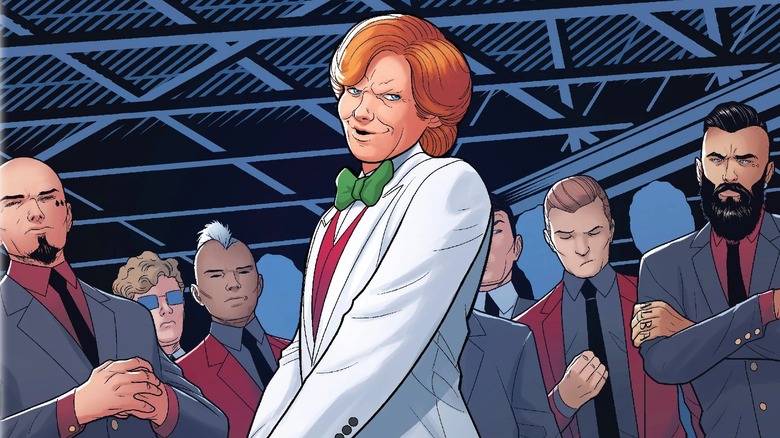
Keep your quarters, pal -- this is one Arcade that doesn't deserve anyone's patronage. In some respects, Arcade is the deadliest gamer alive. He carries out assassinations by trapping his targets in his own personal amusement park of death, one literally titled "Murderworld." One look at his classy attire, devilish smile, and playful approach to torture, and comparisons to a world-famous Gotham City madman might spring to mind. However, unlike that jokester, Arcade plays by the rules: He always allows his victims a small chance to survive, for the sake of good sportsmanship.
There simply isn't any villain in the MCU quite like Arcade. Arcade doesn't want to fight. He wants to play -- and his idea of "play" is radically different from any other cinematic bad guy. The real appeal of bringing Arcade to the MCU would be seeing Murderworld come to life on the big screen, and watching our favorite heroes escape its devious traps. Arcade is not a tragic figure or a hulking monster. He's just a guy looking for a good time. The MCU could absolutely use a bit more of that in its lineup of bad guys.
Supergiant
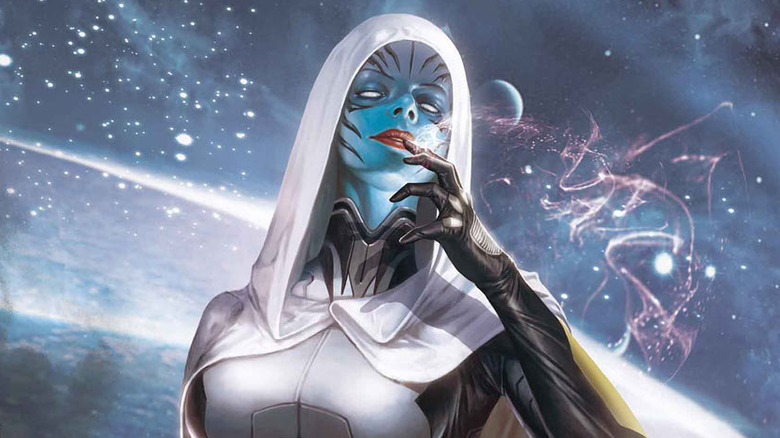
Comics creator legend Jim Starlin probably sleeps well at night knowing that Thanos, one of his most significant contributions to the Marvel canon, is now among the most well-known characters in popular culture. "Avengers: Infinity War" and "Avengers: Endgame" brought the Mad Titan and his Black Order to the forefront, and although his MCU interpretation received a five-star treatment, one part of Thanos' entourage was conspicuously absent: Supergiant, the Black Order's resident omnipath.
Mad and manipulative like her master, Supergiant's skills reside in telepathy and mental absorption -- she's known to "devour" the intellects of her enemies and control their minds. Unlike Cull Obsidian's brute strength or Proxima Midnight's combat prowess, Supergiant is methodical and controlling. Unfortunately, that might explain her absence from the MCU's Black Order: her power set is shared by the most prominent of Thanos' children, Ebony Maw.
Even so, Supergiant could make an appearance in the MCU as a fired or disgraced Black Order member, one deemed too ambitious or power-hungry and left to rot. With the death of Thanos, Supergiant could demonstrate her quiet relentlessness by taking control of multiple heroes and kicking off a second Civil War. Along the way, someone will probably need to point out that, despite her name, Supergiant doesn't actually have size-changing powers.
Hate-Monger
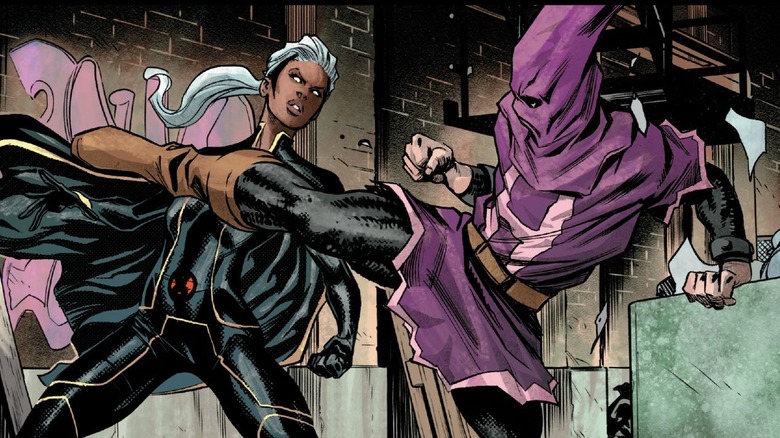
The MCU is many things, but "subtle" is not one of them. From the 9/11 allegories in "Captain America: The Winter Soldier" to the subtextual familial abuse in "Guardians of the Galaxy Vol. 2," the adventures of the Avengers and their amazing friends wear themes like badges of honor: "Look at us, we get to be about something!" This was doubly true in "The Falcon and the Winter Soldier," which drew parallels between Sam Wilson's internal conflict and the racial politics ever-present in modern American society.
Though many have taken on the name (including a clone of Adolf Hitler), the Hate-Monger on this list is Josh Glenn, the most modern version of the character. Stop us if you've heard this one before: Panicked by what he perceives as an influx of immigrants "stealing" American jobs, Glenn took to the internet and learned about the Hate-Monger on conspiracy theory websites. The racist propaganda Glenn discovered eventually led to him taking on the mantle himself, including a headpiece that looks like a piece of purple KKK gear. Hate-Monger is more politically-charged than any other villain on this list, and it would make all the sense in the world if he served as the central villain of Sam's first film as Captain America, bringing the political undertones of Sam's Disney+ series to the forefront. After all, someone in this universe really should've punched a klansman by now.
Scientist Supreme
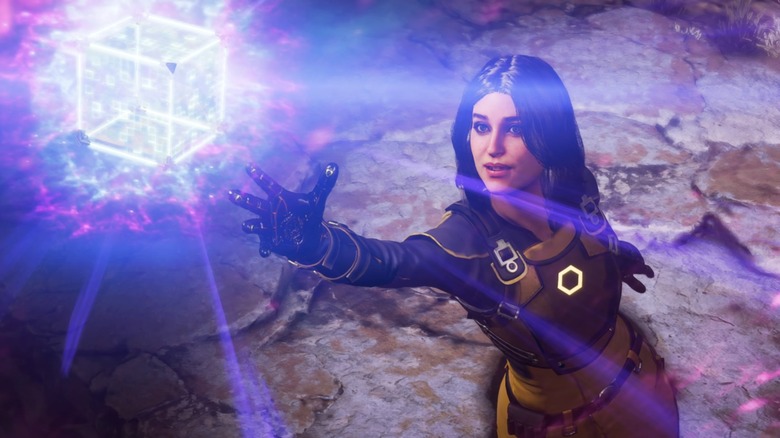
For years, one of Marvel's most evil organizations has been sitting on the sidelines. Advanced Idea Mechanics, also known as A.I.M., is one of House of Ideas' deadliest groups, yet it hasn't been seen or heard from since the beginning of the MCU's Phase Two. That is a shame, considering all of the mischief the organization has orchestrated in the comics. One of the staff members responsible for a lot of A.I.M.'s success is Monica Rappaccini, the sixth Scientist Supreme (not to be confused with "Sorcerer Supreme," Doctor Strange's alternate title).
Monica's main squeeze is biochemistry, specifically organic toxins. She's responsible for developing everything from advanced lymphatic systems that grant total immunity to biochemical to hallucinogenic drugs with pre-recorded imagery. She's been making the rounds in Marvel multimedia over the last few years, appearing in the most recent "Spider-Man" animated series, the "Avengers" video game, and "M.O.D.O.K." (the only reason M.O.D.O.K. isn't on this list, by the way, is because he already has his own show). As a younger up-and-comer in the Marvel canon (she debuted in 2005), the Scientist Supreme would absolutely fit in the MCU, serving as the antithesis to fresh faces like Ironheart and Ms. Marvel.
Read this next: All The Marvel Big Bads, Ranked By Badness
The post 11 Marvel comics villains we really want to see in the MCU appeared first on /Film.
from /Film https://ift.tt/3yv1kPy
via IFTTT
Comments
Post a Comment